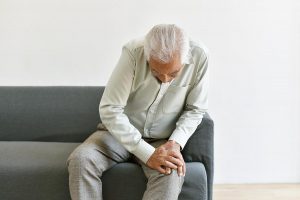While it appears that Black Americans were more hesitant than white Americans to roll up their sleeves when the COVID-19 vaccines launched last year, that unwillingness has lessened.
Following 1,200 U.S. adults through much of the pandemic, researchers found Black people were more likely to change their negative thinking about COVID-19 vaccination compared to white people.
Yet, after six months, the study also discovered the rate of COVID vaccination among Black Americans still lagged behind whites.
If, as the evidence showed, it’s not that Black Americans are more hesitant than white individuals, but they remain less vaccinated, “then we really need to ask ourselves, is it access barriers that are affecting Black Americans more?” said Tasleem Padamsee, lead study author.
“If so, which ones are they, in which communities and what do we need to do to address those access barriers so that people who want to be vaccinated can be?” said Padamsee, an assistant professor at the Ohio State University College of Public Health, in Columbus.
Padamsee said she noticed the public conversation about vaccine hesitancy in early 2021 included talk about excess vaccine hesitancy among communities of color and the idea that communities of color, particularly Black individuals, might not want to be vaccinated.
“It just was not all that consistent with all of the work that I’ve done over many years on health equity issues and on health in African American populations in general,” said Padamsee. “These groups of people want to protect themselves from issues like COVID-19 very strongly and are very motivated to do that. I was motivated to explore more based on that.”
Historical trauma
The reasons there may have been initial hesitancy among Black people is rooted at least partly in historical trauma, the researchers noted. For instance, Black men in the U.S. Tuskegee Syphilis Study were never offered treatment or asked for consent. Together with ongoing experiences of institutionalized racism within health care, this can be a barrier to accepting a new medical treatment.
Padamsee said she expected those same feelings of hesitation in that context would lead Black communities to get the COVID-19 vaccine when they had gathered enough safety information. It was well known that COVID was striking minority populations especially hard.
“People will be equally excited about using something effective to protect themselves and their communities as they were cautious and for the same reasons, because they were thinking about protection and caring for people all along,” Padamsee said.
The research highlights the importance of not making assumptions about race-based viewpoints.
For the study, the researchers followed the same 1,200 individuals through the pandemic. About 64% of participants were white and just over 12% were Black. The data was collected in seven waves between December 2020 and mid-June 2021. Beliefs about safety, effectiveness and necessity of vaccines were measured on a five-point scale.
Vaccine hesitancy decreased more rapidly among Black people than among white people. That “Black individuals more rapidly came to believe that vaccines were necessary to protect themselves and their communities” seems to be a key factor, according to the study.
Confidence in the result
“One of the things that makes our data collection effort here unique is that we were talking to the same group of people over the course of several months,” said Kelly Garrett, a professor in Ohio State’s School of Communication.
“We are basically comparing each individual to themselves over time, and that’s an important part of why we are confident in our result,” Garrett said.
In December 2020, about 38% of Black participants and 28% of white participants expressed hesitancy about the vaccines. By June 2021, those responses had shifted so they were almost even, with 26% of Black participants hesitant compared to 27% of white participants.
Though this study was not focused on the reasons for the lower vaccination rates, various obstacles might keep Black people from getting vaccinated, according to the study, which cited Kaiser Family Foundation surveys on access barriers.
Potential obstacles could include concern about missing work to get the vaccine or missing it afterward due to side effects, not having transportation to the vaccine site or worrying about the cost of vaccines, which are free for all Americans, but that’s not something everyone is aware of, Padamsee said.
The findings were published online Jan. 21 in JAMA Network Open.
Dr. Kirsten Bibbins-Domingo is chair of epidemiology and biostatistics at the University of California, San Francisco. Commenting on the report, she said, “I think what the study does nicely is to remind us that vaccine hesitancy is malleable. Vaccine hesitancy could be thought of as a just wait-and-see attitude or an attitude of ‘I need to get my questions answered.'”
Bibbins-Domingo said it’s a mistake to think someone won’t get vaccinated just because they don’t rush out at first. Communication from trusted people or lowering barriers to getting a vaccine can improve vaccination rates, she suggested.
In terms of reducing barriers, that is a question that requires thinking very locally, she added.
“All of us, whether we’re thinking at the policy level or whether we’re thinking at the individual level, have to be able to lower those barriers. This study to me is a big piece of hope that people do shift, but we have to meet that shift in individuals’ intentions with these other actions to make sure people get vaccinated,” Bibbins-Domingo said.
More information
Kaiser Family Foundation has more on COVID-19 vaccinations by race/ethnicity.
SOURCES: Tasleem Padamsee, PhD, assistant professor, Health Services Management and Policy, The Ohio State University College of Public Health, Columbus, Ohio; Kelly Garrett, PhD, professor, School of Communication, The Ohio State University, Columbus, Ohio; Kirsten Bibbins-Domingo, PhD, MD, chair, epidemiology and biostatistics, University of California, San Francisco School of Medicine; JAMA Network Open, Jan. 21, 2022, online
Source: HealthDay
Copyright © 2025 HealthDay. All rights reserved.

















